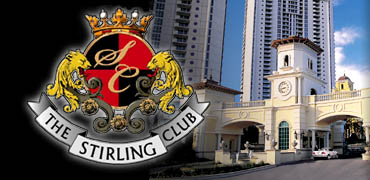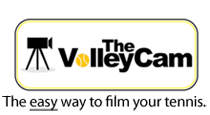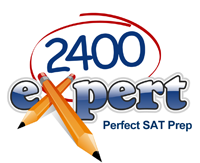|
|
BY SCOTT PENSIVY, PT, LAT, ATC OWNER S.P.O.R.T.S. (Scott Pensivy Orthopedic Rehabilitation Therapy Services) |
|
Many tennis athletes have a shoulder syndrome that is created by muscle imbalances. Over the years, tennis elbow has made its way into medical terminology; a layperson knows it and in the medical field it is called lateral epicondylitis. Lateral epicondylitis, or tennis elbow, is the inflammation of a tendon secondary to overuse, poor mechanics, or trauma to this area. Few of us have heard of tennis shoulder, a term I have named while assessing many athletes including national and mature-ranked players. This term comes from an observation I have made in these professions; this pathology is not only elbow pathology, but more importantly a shoulder complex pathology. The term is not a misnomer. Having worked with these gifted athletes, I have discovered consistent patterns across the board regardless of gender. I have seen significant overtrained shoulders of internal rotators and pectoralis muscles, along with biceps, of the dominant arm of a tennis player, thus demonstrating undertrained muscles of the right arm. Specifically, external rotators and rotator cuff muscles. I see this often with my young players and old players alike. This condition increases the imbalances as a person increases his or her activity. |
|
Along with muscle strength and balances, these athletes also exhibit a decrease in range of motion, both active and passive. The greatest limitation I see is passive shoulder internal rotation and forearm supination of the dominant arm. These problems often lead to distal pathologies such as wrist tendinitis, carpal tunnel syndrome, forearm tendinitis, and proximal rotator cuff tendinitis. I have even seen the imbalances lead to thoracic outlet syndrome and cervicogenic pathologies. To reiterate the above-stated material, I see proximal causes for distal complaints, thus the cause being proximal muscle imbalances causing the distal pathology such as lateral epicondylitis. To understand how tennis shoulder occurs, consider that the shoulder sacrifices instability to warrant an increase in mobility. The shoulder can move in all directions, more than any other joint in the body. It has planar motions in the sagittal, transverse, and frontal planes. The shoulder is much like the hip, as the hip and shoulder are a ball-and-socket joint, but unlike the shoulder, the hip has a deep ball-and-socket joint made up in the ilium and is supported by strong ligaments that cross the joint anteriorly and posteriorly. With the shoulder, the glenohumeral joint is a ball-and-socket, but a very shallow socket. Shoulder stability is greatest secondary to muscular balance and not ligamentous. Because the glenohumeral socket is shallow, the shoulder must rely on soft tissue structures, most importantly the rotator cuff and in some studies, the greatest in the supraspinatus. Stability primarily comes from the 4 muscles and tendons that insert around the head of the humerus; supraspinatus, infraspinatus, teres minor, and subscapularis which are together these are all known as the rotator cuff. Because of the composition of the supraspinatus and the location, it pulls the head of the humerus into the socket. In some EMG studies, it is shown that this is the most important muscle for stability of the shoulder. Unfortunately, players with tennis shoulder have a severe muscle imbalance often with internal rotators becoming stronger than external rotators, along with an increase in pronators becoming continually strong along with pectoralis muscles and biceps, thus allowing the other muscles to become weaker causing imbalance. The imbalance causes the muscles to be overly stimulated and weakens the muscles that are not being recruited. Over time, what happens is the stronger muscles become stronger and tighter and the weaker muscles become looser and weaker. When athletes perform most tennis activities, either concentric or eccentric occurs. Most stress on the shoulder joint arises from eccentric contraction during a follow through motion. This motion can consist of a serve overhead, volleys overhead, forearms trying to slow down the swing, or deceleration. The eccentric contraction puts an increased load on the muscle more than a concentric. We often see this with what we call negatives when doing a bench press. A negative is an eccentric contraction of the pectoralis; often we see the athlete complain of increased soreness more so than a concentric activity or regular bench press. This is because there are more Z-fiber contractions causing an increase in muscle loading. With improper balance of muscles of the shoulder, there is a higher instance of overuse injuries. So, one performing an eccentric contraction, more importance needs to be placed on appropriate firing and appropriate sequence of firing to prevent injuries. In addition to proper balance of the shoulder musculature, athletes often have a decrease in shoulder passive range of motion, especially the shoulder internal rotators. The decrease of shoulder internal rotation causes an increased force on the anterior capsule. This force can create instability in the glenohumeral joint where you may see a popping or clicking in the joint. This causes possible decrease in sheering forces producing possible osteophytes or osteoarthritis in the glenohumeral joint. We also see a poor proprioception of the joint because of this constant instability and this is a common occurrence seen in this type of pathology. This is more of a neurological proprioception component that is very important for appropriate swing stability of a tennis stroke for the glenohumeral joint. This, in turn, will cause poor muscle firing if the proprioception is not adequate or appropriate and symmetrical. Thus, we often see impingement syndrome of the rotator cuff. The scapula has 17 muscles that attach to it. The scapula is often known to a layperson as the wing bone of the shoulder. This scapula having 17 attachments could cause 17 errors or poor scapulohumeral rhythm. Having just one or two of these muscles not contracting appropriately can cause havoc in the glenohumeral joint. This poor firing can lead to injuries from inappropriate muscle firing. We must always continue to evaluate an assess the scapular rhythm when looking at a shoulder, along with the active and passives range of motion of the shoulder. Also possible are anatomical variances of the acromioclavicular joint that need to be assessed. These joints, we often hear in medical terms as type 1, type 2 or type 3, which can cause right shoulder pathologies in type 2 and type 3. These syndromes or types are classified as downsloping. In a grade 1, there is no downsloping. In a grade 2, there is a small downsloping. In a grade 3, there is a significant beaking and compression possible causing impingement syndrome of the supraspinatus musculature. Type 1 creates the least amount of impingement; type 3 creates the greatest. Therefore, along with muscles and range of motion, we also have to look at the acromioclavicular joint to avoid shoulder injuries. If one complains of shoulder pain, an x-ray can help rule-out these influencing factors. When a grade 3 acromion process, the subacromial space decreases considerately with an overhead serve causing a potential for impingement or even rotator cuff tear. Unless specific exercises and stretches are added to the players program, this can be a chronic condition that may prevent the individual from ever participating again in overhead activities such as tennis. This can be relieved by surgical intervention, which I call an acromioclavicular or Mumford procedure. A compounding problem in the anatomical area of the shoulder called the hypovascular zone in the glenohumeral joint can also cause problems. This area is near the insertion of the supraspinatus region and into the humerus. This hypovascular zone has poor vascular supply and is vulnerable to injury. In the hypovascular zone, if it is injured, it can become a chronic problem secondary to the lack of vascular supply, thus decreasing healing possibilities and creating a poor environment for healing. With an increase in blood supply, oxygen and blood flow are increased so the healing components increase. With a decrease, the healing properties are taken away and opportunities for healing diminish. In fact, this zone is often injured because space decreases from the acromioclavicular joint and a proximal-humeral area when a patient performs an overhead motion such a serve or overhead volley in a tennis swing. Much like a baseball throw, a serve is not a natural arm motion. There are many areas that can irritate the acromion and supraspinatus regions with these types of activities. As practitioners, we can avoid these problems by appropriately addressing athlete's structures and problems with evaluations and assessments by a trained professional. This may include videotaping of a serve along with a specific head-to-toe evaluation by the professional. It has been my experience to evaluate the entire body, which can be the ankles, feet, knees, hips, shoulders, and the neck which can all influence reactions of the shoulder. Even elbow extension and pronation need to be evaluated in the forearm. As a physical therapist, we are taught when the feet hit the ground, everything changes. In addition to properly assessing athletes, we must prescribe specific exercises that promote appropriate muscular balance and firing. This can only be done by an appropriate muscle and structural screening. To do this, I use several exercises that do not require a machine or a great deal of equipment. An athlete would need a band and small weights and must demonstrate consistent high repetitions with low weights and appropriate form and mechanics. This is an area where quality is more important than quantity. The patient must be appropriately positioned so the posture and forearm are aligned to help facilitate the appropriate muscles. As skilled practitioners, we need to educate and identify areas of imbalance and weakness to prevent muscular substitution and poor balances in these areas. Exercises I feel can help intermittently could be partial push-ups with the greatest emphasis on isometric holds for 10 seconds and 15 repetitions. It also has been proven in the past years that eccentrically rolling on the tendon junction also improves healing faster than concentric. Thus, eccentric loading on a tendon can help with tendinitis, greater than concentric. This was a study done in 2007 by a Sports Institution. While performing these exercises, athletes must keep the scapula retracted in a neutral position while performing all activities in an appropriate manner. If the athlete has a weak right shoulder, they can lie on their left side keeping their right elbow close to their side, elbow flexed at 90° and externally rotating the arm. The weight should be no greater than 5 pounds, as you may recruit inappropriate muscles. Most often we see 3 pounds to be appropriate while starting with either no weight or 1 pound. The patient will then externally rotate the arm and will feel a fatigue or resistance area in the posterior aspect of the shoulder. These exercises help strengthen the external rotators and help to develop underlying muscles. This will also allow for appropriate scapular rhythm without winging or ab normal scapular substitution in the scapular complex. There are also other exercises such as empty can and prone rotator cuff table that help the scapulohumeral rhythm musculature to fire appropriately. If a patient starts off on their own to do exercises, we often see continuing substitution and poor muscle firing, thus leading to more injuries. In addition, I use a disc which incorporates the abdominal muscles and core to help with muscle imbalances of the erector spinae group and core. In other words, we often see distal complaints such as lateral epicondylitis secondary to the core or right shoulder weakness. Along with this, I incorporate rhomboid muscles with seated retractions, again with high repetitions, trying to avoid pectoral contraction and bicep contractions with my tennis players, since these are often muscles that are overused anyway. It has been noted that it takes 6,000 repetitions to reeducate a muscle to fire correctly. Once this is performed, the patient can start with power and strength exercises to continue to improve their rehabilitation potential. When working with athletes, I do not emphasize traditional exercises such as bench press, military fly's, bicep curls, which just enforce head forward posture, rounded shoulders, and weaken the most important muscles in a tennis swing. We must strengthen these muscles such the biceps and pectoralis only when needed and in a more closed-connect chain posture because this will help decrease injuries. Educating a patient is very important in the aspect of helping the patient reach their full rehabilitation potential and to prevent injuries. Consider using a shoulder model to demonstrate the problems to the individual and point out the mechanics of the shoulder. Often when an athlete sees and understands these pathologies, they will comply more readily to home exercise programs once they see what the exercises are trying to accomplish. To prevent tennis shoulder, we must have screenings that are done appropriately; we can do this at S.P.O.R.T.S. We look at the individual's own body structure, range of motion, strength, endurance and functional strength. S.P.O.R.T.S. has been working with amateur and professional athletes for over 23 years with continued success. We hope you continue to have a pain-free game, but if shoulder pain occurs, please feel free to contact S.P.O.R.T.S. at (702) 655-8535. With proper assessment and specific strengthening exercises, tennis players will enjoy their game and remain injury free. Scott Pensivy, PT, LAT, ATC Owner, S.P.O.R.T.S. Physical Therapy SP/hi |


.jpg)
.gif)
.gif)
.jpg)


.png)

.png)
.jpg)



